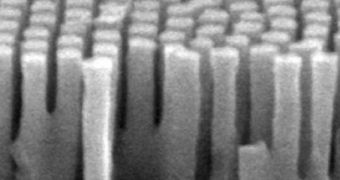Using an advanced nanostructuring technique, researchers in the United States were recently able to create materials that are extremely water-repelling, or superhydrophobic. Materials in this class exist in nature, with the lotus leaf being the first example that comes to mind.
Water droplets have a very hard time grabbing hold of the lotus leaf, so they always fall off. Needless to say, in industry, having access to materials that require no maintenance or special treatments to remain dry would be a major step forwards, Architect Magazine reports.
Now, researchers at the US Department of Energy's (DOE) Brookhaven National Laboratory (BNL) bring this objective closer to reality, with the development of a nanostructure-based surface that is superhydrophobic. Furthermore, their approach allows very tiny particles to self-assemble into these structures.
During the study, the team found that cone-shaped nanostructures were significantly better able to repel water than cylinder-shaped ones. The group will continue to investigate various options, and hopes to bring the new super-water-repelling materials to the market as soon as possible.

 14 DAY TRIAL //
14 DAY TRIAL //